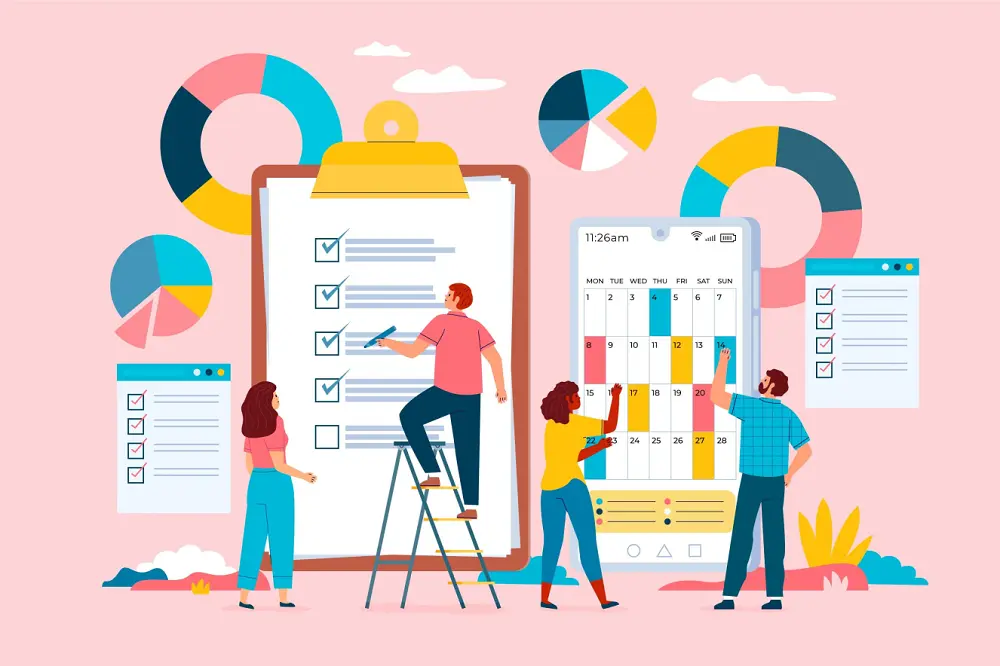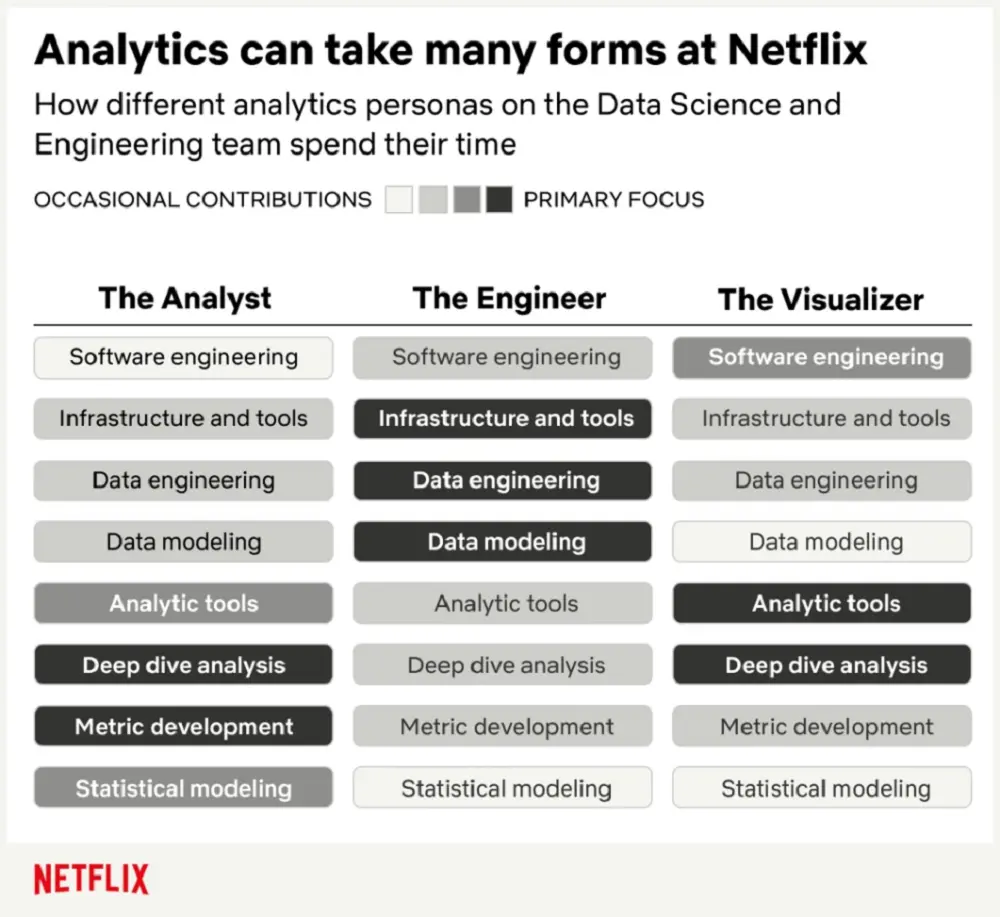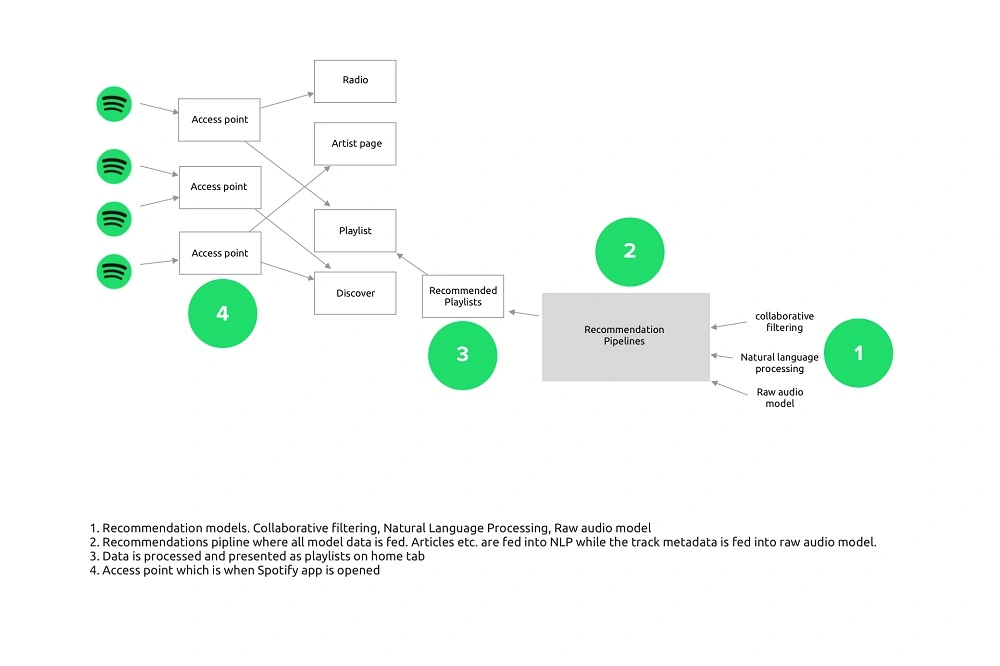Whether you’re considering a career in data science or a seasoned professional keeping an eye on industry trends, we’ve got you covered. In the following sections, we’ll delve into a curated selection of data analysis case study examples, offering insights into how data science drives business success and advances research endeavors.
Why learning data analysis case studies is essential?
Data analytics has become indispensable in today’s business landscape, promoting informed decision-making, and uncovering valuable insights across various industries. Case studies in data analytics play a crucial role in illustrating real-world applications and their impacts.
One of the main reasons to study data analytics case studies is the opportunity to learn from those who have embarked on the field of data-driven decision-making, whether successes or failures.

These case studies provide a rich archive of best practices, strategies, and approaches that have proven effective in different situations. These real-world case studies provide insight into how experts solved challenges in the past, providing inspiration and guidance for students and entry-level data scientists’ input level.
The case studies also shed light on cases where data analysis efforts failed. These “lessons learned” stories help organizations anticipate potential risks and failures, helping them avoid costly mistakes. Understanding why specific data analytics projects fail to deliver expected results can be as instructive as studying successful projects.
Top 8 industry-specific data analysis case studies
#1 E-commerce & Retail
Walmart’s Data-driven retail revolution
Walmart, a retail giant with a global presence, has embraced data analysis wholeheartedly. With over 10,500 stores across 24 countries and a substantial e-commerce footprint, their fiscal year revenue in 2021 reached a staggering $559 billion. Walmart’s data science and analytics arm, Walmart Labs, plays a pivotal role in its success. They operate the world’s largest private cloud, capable of managing a mind-boggling 2.5 petabytes of data every hour.
- Personalized Customer Shopping Experience:
Walmart employs data analytics to gain deeper insights into customer preferences and shopping behaviours. They optimize merchandise stocking and display strategies in their stores by analyzing big data. This analysis also guides decisions on product discontinuation and brand performance assessment.

- Order Sourcing and On-Time Delivery Promise:
Walmart.com attracts millions of customers, each receiving a real-time estimated delivery date for their purchases. This estimation is powered by a sophisticated backend algorithm that considers customer location, inventory levels, and available shipping methods. The supply chain management system plays a pivotal role in determining the ideal fulfillment center for each order, all while minimizing transportation costs to meet delivery promises.
- Packing Optimization:
Packing items efficiently is a daily challenge in retail and eCommerce. Walmart tackles this by utilizing a recommender system that suggests the most suitable box size to minimize space wastage while accommodating all ordered items within a fixed timeframe. This recommendation system addresses the classic NP-Hard problem known as the Bin Packing Problem.
In essence, Walmart’s data-driven journey demonstrates how they harness data science and visualization to optimize supply chains, tailor the shopping experience, and drive business growth. These applications showcase how effective data analysis and visualization are essential to Walmart’s commitment to better serving its customers.
These applications highlight how data science and visualization enable Walmart to improve supply chains, tailor shopping experiences, and drive growth. Explore real-world data science projects for more insights.
Amazon’s data-driven retail dominance
The Seattle-based multinational giant Amazon has evolved from an online bookseller into an eCommerce, cloud computing, digital streaming, and AI juggernaut. With over 1,400,000 servers housing an estimated 1,000,000,000 gigabytes of data, Amazon’s relentless innovation in data science sets the gold standard for understanding customers.
- Recommendation Systems:
Amazon’s mastery of data science shines through its recommendation systems. By leveraging customer purchase data, collaborative filtering anticipates users’ needs and suggests products even before they search. Amazon’s Recommendation Based Systems (RBS) generate 35% of annual sales, enhancing user experiences and boosting revenue.
- Retail Price Optimization:
Amazon’s product pricing is a testament to data-driven precision. Predictive models calculate optimal prices that won’t deter customers, determining their purchase likelihood and its potential impact on future buying patterns. This intricate pricing strategy considers diverse variables, including website activity, competitor pricing, product availability, preferences, order history, profit margins, and more.

- Fraud Detection:
Operating as a colossal eCommerce entity exposes Amazon to significant retail fraud risks. The company meticulously collects historical and real-time order data as a preemptive measure. Employing machine learning algorithms, Amazon identifies transactions more likely to be fraudulent. This proactive approach curbs potential abuse, such as excessive product returns, safeguarding the business.
Amazon’s data analytics prowess exemplifies how leveraging vast data volumes can revolutionize eCommerce. From personalized recommendations to precise pricing and fraud prevention, Amazon’s innovative data science applications continue to set industry benchmarks.
Boody: Centralizing customer data for informed decisions
In a different retail landscape, Boody represents a notable global apparel business committed to environmentally conscious practices. Managing data from over 2,500 retailers in 15+ countries, both online and offline, posed significant challenges to the Boody’s management board. The influx of customer information, online transactions, and product data was overwhelming.
To address this, Boody came to us, and Synodus has assisted them with building a comprehensive data integration strategy. We helped them centralize over 150GB of data from ten different sources into a single database, each updated real-time every five minutes. This transformation empowered Boody to gain deeper insights from their data, facilitating faster and more informed decision-making.
In the ever-evolving e-commerce and retail sector, these case studies illustrate the transformative potential of data analysis, from optimizing operations to enhancing customer experiences and driving sustainable growth.
Discover our comprehensive Data Analytics Services here: Data Analytics Porfolio
#2 Entertainment
Netflix
From its humble DVD rental origins, Netflix has evolved into a global streaming giant, boasting 208 million paid subscribers worldwide and 3 billion monthly hours watched. A sophisticated data analytics and recommendation system is central to its meteoric rise, processing a staggering 100 billion daily events. Here’s how they apply data analysis:
- Personalized Recommendation Engine:
Netflix thrives on data, employing over 1300 recommendation clusters that analyze user viewing patterns, viewing times, search queries, and content interactions. With this data, Netflix deploys algorithms like Personalized Video Ranking, Trending Now Ranker, and the Continue Watching Now Ranker to provide each user with a personalized watchlist. The result? A tailored viewing experience that keeps subscribers engaged.
- Data-Driven Content Development:
Netflix leverages data science to decode user behavior, uncovering thematic and genre preferences. This wealth of insights drives content creation, spawning hits like “The Umbrella Academy,” “Orange Is the New Black,” and “The Queen’s Gambit.” By basing their decisions on data, Netflix takes calculated creative risks, confident their audience will embrace these offerings.

- Precision Marketing Campaigns:
Netflix doesn’t leave marketing to chance. They employ data analytics to pinpoint the optimal launch times for shows and ad campaigns, ensuring maximum impact on target audiences. With the help of marketing analytics, Netflix crafts tailored trailers and thumbnails for distinct viewer groups. For instance, they strategically launched the “House of Cards” Season 5 trailer featuring a giant American flag during the American presidential elections, resonating powerfully with their audience.
In a world flooded with content, Netflix’s data-driven approach enables them to stand out by personalizing recommendations, developing hit shows, and orchestrating impactful marketing campaigns. Through data visualization and analytics, they master the art of entertainment.
Spotify
In a world dominated by music streaming, Spotify stands out with 320 million monthly users, 4 billion playlists, and 2 million podcasts. Their success hinges on robust data analytics. Case studies illuminate their data-driven approach:
- Real-time Music Recommendations:
Spotify uses Bayesian Additive Regression Trees (Bart) to provide real-time, personalized music recommendations. Bart adapts daily and incorporates audio signals, gender, age, and accent to enhance suggestions.
- Tailored Playlists:
‘Daily Mixes’ are Spotify’s answer to personalization. They create daily playlists based on users’ song choices and artist preferences, introducing fresh tracks for an enriched experience. ‘Release Radar’ weekly playlists introduce users to new releases from followed or liked artists.

- Precision Targeted Marketing:
Spotify leverages its massive dataset to fine-tune ad campaigns. Machine learning models analyze user behavior, including music preferences, age, gender, and ethnicity. Notably, meme-inspired ads achieved global success.
- Song Classification:
Spotify employs Convolutional Neural Networks (CNNs) for song and audio track evaluation. This enables precise song recommendations and playlist curation based on lyrics, rhythms, and similarity to other tracks.
- Textual Analysis:
Natural Language Processing (NLP) comes into play as Spotify scans articles and blogs for insights into song descriptions and artist details. This analytical approach aids in identifying similar artists and songs for better recommendations.
These case studies underscore Spotify’s data-driven approach, demonstrating how data visualization and analytics enhance user experiences and drive business growth.
#3 Travel industry
A global ride-hailing leader, Uber harnesses data analytics to optimize operations and enhance customer experiences. With 91 million monthly users and 3.8 million drivers as of 2018, Uber handles a staggering 14 million daily trips. Key data-driven applications include:
- Dynamic Pricing and Demand Forecasting:
Uber adapts pricing in real-time based on demand, using surge pricing during busy times. The ‘Geosurge’ model, which predicts pricing based on ride demand and location, ensures passengers and drivers know surges, maximizing efficiency.
- One-Click Chat (OCC):
Uber simplifies driver-passenger communication with OCC, a machine learning and natural language processing solution. OCC anticipates responses to common queries, enabling drivers to address customer messages with a single click efficiently. This enhances user experience and support.
- Customer Retention through Data Insights:
Uber bridges supply-demand gaps using machine learning models. Predictive models anticipate demand across locations, ensuring Uber remains a convenient choice. A tier-based reward system categorizes customers by usage, with higher levels yielding more fabulous perks. Personalized destination recommendations based on users’ travel histories elevate the ride experience.
Uber leverages data analysis for dynamic pricing, streamlined communication, and enhanced customer retention. These applications highlight data’s transformative role in the travel industry, enabling Uber to offer worldwide efficient, personalized transportation services.
#4 Healthcare
Pfizer, a global pharmaceutical giant headquartered in New York, has embraced data analytics to revolutionize healthcare. Known for its breakthroughs in immunology, oncology, cardiology, and neurology, Pfizer gained worldwide recognition with the first FDA-approved COVID-19 vaccine in 2010, later authorized for children aged 5 to 11. Here’s how Pfizer employs data analysis:
- Clinical Trial Optimization:
Pfizer leverages artificial intelligence (AI) and machine learning (ML) to enhance clinical trials. Natural language processing and data exploration scrutinize patient records, pinpointing ideal candidates. AI identifies individuals with specific symptoms and predicts potential drug interactions, sidestepping complications. For their 44,000-candidate COVID-19 clinical trial, Pfizer’s AI swiftly discerned signals amid the data deluge.
- Efficient Supply Chain:
Data science and ML drive Pfizer’s drug manufacturing and distribution. Advanced forecasting optimizes vaccine and drug demand, while ML models automate and refine production processes. Customized drug supply to distinct patient groups and predictive maintenance further economize operations.
- Drug Discovery:
Pfizer capitalizes on data analytics to expedite drug development. Computer simulations and interaction tests expedite drug trials. Collaborating with IBM Watson in 2016, Pfizer harnessed AI for immuno-oncology research. Deep learning models predict bioactivity, synthesis, and potential toxic reactions, saving millions in trials.
In conclusion, Pfizer’s data-driven approach has redefined healthcare. From clinical trials and supply chains to drug discovery, data analytics empowers Pfizer to innovate, develop life-saving drugs, and combat diseases efficiently. This showcases the profound impact of data analysis in the healthcare sector.
#5 Oil & Gas
Shell, a global energy and petrochemical conglomerate operating in over 70 countries with 80,000 employees, is at the forefront of shaping a sustainable energy future. Striving to become a clean energy company by 2050, Shell harnesses digital technologies, including AI and Machine Learning, to drive a significant industry shift. Critical applications of data analytics in the petrochemical sector include:
- Precision Drilling:
Shell employs reinforcement learning to enhance drilling processes. This AI-driven approach guides drilling equipment, considering historical drilling data, bit sizes, temperatures, pressures, and seismic activity. By optimizing drilling operations, Shell improves efficiency, reduces machinery wear, and achieves superior results.
- Efficient Charging Terminals:
In response to the global push for electric vehicles, Shell utilizes AI to monitor and predict demand for charging terminals. This proactive approach ensures an efficient supply of charging infrastructure, addresses grid load challenges posed by multiple vehicles charging simultaneously, and encourages the adoption of electric cars.

- Safety and Monitoring:
Shell pioneers computer vision systems, enhancing security at service stations. These systems can detect risky behaviors such as smoking near fuel pumps and alerting staff to prevent potential hazards. Furthermore, these AI models can be expanded to identify unsafe driving practices and deter theft.
In summary, Shell’s strategic integration of data analytics, AI, and Machine Learning ushers in a transformative era for the petrochemical industry. By optimizing drilling, promoting electric vehicle adoption, and enhancing safety, Shell exemplifies how data analysis drives innovation and sustainability in the oil and gas sector.
#6 Supply chain & logistics
In a rapidly evolving business landscape, supply chain analytics has become a game-changer, enhancing operational efficiency and strategic decision-making. Here, we delve into six pivotal examples of supply chain analytics that transform how businesses manage their operations:
- Capacity Planning:
Efficient supply chains align procurement and manufacturing capacity with fluctuating sales demands. Prescriptive analytics, powered by mathematical models, guides optimal capacity planning, whether proactive, reactive, or incremental.
- Advanced S&OP:
Evolving beyond traditional Sales and Operations Planning (S&OP), the advanced version integrates financial considerations using prescriptive analytics. This enhances S&OP strategies, making them more profitable and agile.
- Simulation and Scenario Analysis:
Strategic planning involves envisioning diverse scenarios and strategies. Prescriptive analytics enables optimization-based scenario planning, allowing organizations to simulate multiple scenarios and identify optimal solutions to complex “what-if” inquiries.
- Optimization:
Inventory management in omnichannel retail requires precision. Prescriptive analytics leads inventory optimization, crafting accurate models and utilizing non-linear solvers to identify optimal inventory strategies. Solutions may include last-mile distribution warehousing and optimized shipping methods.
These supply chain analytics examples empower businesses to thrive in a dynamic marketplace. By embracing data-driven decision-making and harnessing prescriptive analytics, organizations enhance their ability to navigate complexity and drive growth and success.
#7 Finance & Banking
Finance and banking rely on data analytics for critical functions like risk management, customer data management, and fraud detection.
- Risk Analysis Management:
Cutting-edge algorithms, fueled by machine learning and data science, analyze extensive data, refining risk assessment models independently. This leads to increased responsiveness and profitability for financial institutions.
- Customer Data Management:
Accumulating comprehensive customer information enables the development of behavioral profiles, facilitating personalized sales promotion strategies. Data science automates this process, freeing up employees for higher-value tasks.
- Fraud Detection:
Machine learning algorithms act as vigilant sentinels, rapidly identifying and preventing fraud related to bank cards, accounts, and transactions. For example, they can flag suspiciously expensive purchases from new accounts. Banks also implement systems to monitor abnormal transactions, prompting additional confirmation for unusual activities.
A Data Analysis Case Study Example from one of the biggest Vietnam’s joint-stock banks
Our fomer client is one of the largest joint stock banks in Vietnam, and they needed to tackle the challenges in managing vast transaction data volumes, leading to slow response times for managers. Additionally, they lacked Power BI expertise for migration, and their reporting mechanism took up to a month to deliver data to managers, hampered by data silos.
We has collaborated with them to implement a two-pronged approach, deploying an on-premises Power BI Report Server and providing Power BI training to bank analysts. This empowered efficient data management and analysis, resulting in over 15 automated weekly reports spanning various bank areas, including lending, KYC, and wealth management. This greatly enhanced monitoring and decision-making capabilities, fostering Techcombank’s digital transformation and competitive edge.
#8 Agriculture
Traditionally unpredictable agriculture now benefits from data science, enabling farmers to optimize operations, reduce waste, and boost productivity. Technology empowers data-driven decisions on crop selection, livestock, and resource management.
- IBM’s Watson Decision Platform:
IBM is at the forefront of enhancing farm productivity through AI and machine learning. The Watson Decision Platform for Agriculture empowers farmers with crucial data on crops and soil conditions, enabling informed decisions.
- Versatility Across Locations:
This machine learning model is adaptable to diverse locations, regardless of weather or growth conditions. It retrospectively assesses past growing seasons, a vital aspect for validating agriculture insurance claims, managing risk, optimizing supply chains, and predicting commodity prices.

- Weather-Based Risk Analysis:
The platform utilizes weather forecasts to predict risks such as corn pests and disease outbreaks, spore transport, and the likelihood of their occurrence. Farmers can reduce pesticide use and implement preventive measures to safeguard yields with this information.
Data science’s integration into agriculture offers unprecedented efficiency, sustainability, and profitability opportunities, transforming an age-old industry into a modern, data-driven success story.
How to maximize the value of data analysis case studies
To maximize the value of data analysis case studies, organizations should clearly define their objectives and identify the specific business challenges or opportunities they aim to address. Ensuring alignment between the case study focus and the organization’s overall strategic goals is essential.
Next, organizations should invest in data quality and diversity. Access to a wide range of data sources, both internal and external, enables a more comprehensive analysis and the discovery of meaningful insights. Data cleansing and preparation are equally crucial to ensure the accuracy and reliability of results.
Interdisciplinary collaboration is a critical factor in extracting maximum value from case studies. Organizations can gain diverse perspectives and make more informed decisions based on the findings by involving data scientists, domain experts, and decision-makers.
Furthermore, organizations should view data analysis as an ongoing process. Regularly updating case studies with fresh data allows monitoring progress and adapting strategies as needed. Data security and compliance with privacy regulations must also be a top priority to protect sensitive information.
Effective communication of the case study findings is essential. Organizations can use clear visualizations and explanations to ensure that the insights are accessible and actionable for all stakeholders. In conclusion, by following these steps, organizations can unlock the full potential of data analysis case studies, driving informed decisions and achieving sustainable growth.
Wrapping up
In closing, data analysis case studies are powerful tools for driving informed decisions and facilitating sustainable growth. At Synodus, we are dedicated to helping organizations harness the complete potential of data analytics. Our expertise spans various industries, including finance, healthcare, agriculture, logistics, and more.
If you’re ready to embark on a data-driven journey that will propel your organization to new heights, we invite you to contact us today. Explore the comprehensive data solutions offered by Synodus by visiting our website at Synodus.com. Discover a world of possibilities as you leverage data analytics to gain a competitive edge and achieve your business objectives.
More related posts from Big data blog you shouldn’t skip:
How useful was this post?
Click on a star to rate it!
Average rating / 5. Vote count:
No votes so far! Be the first to rate this post.




